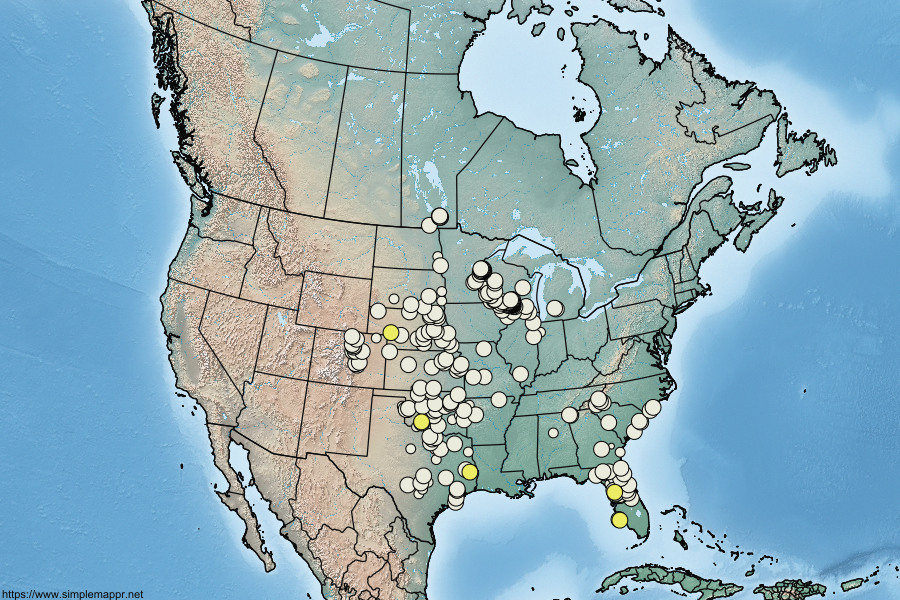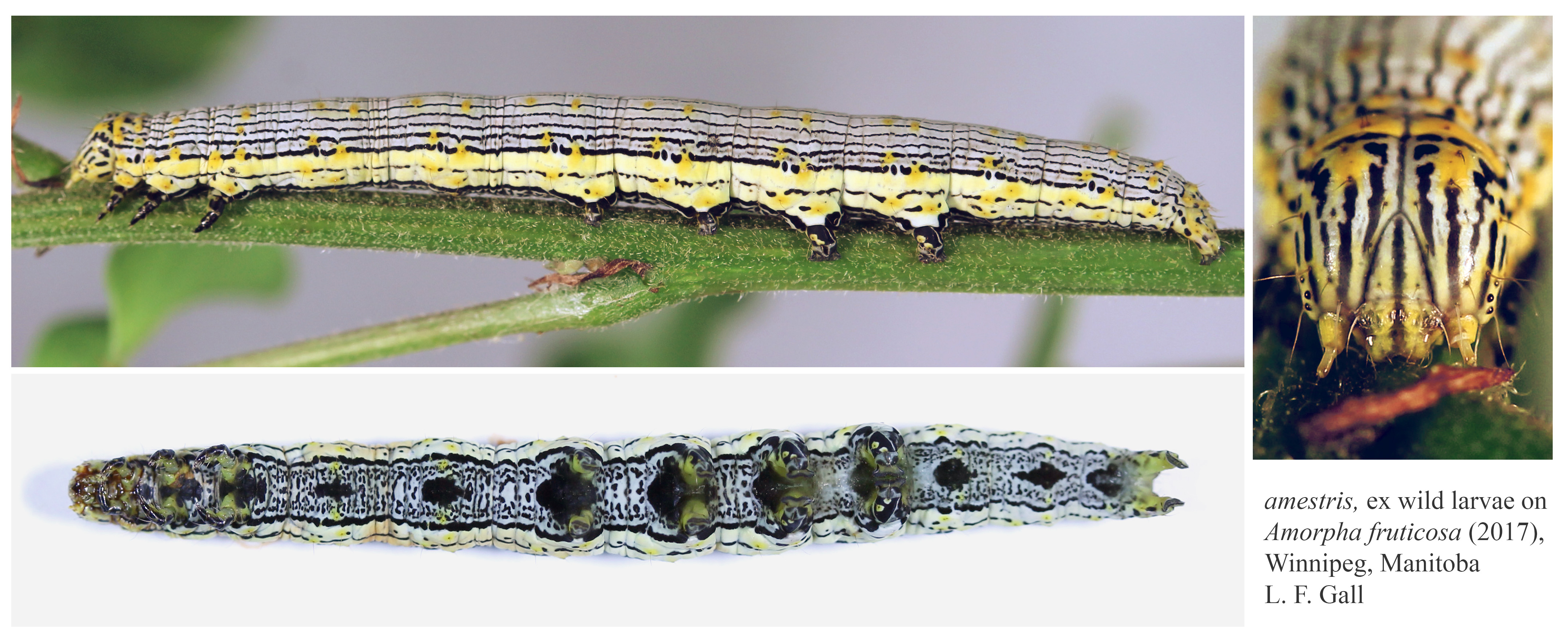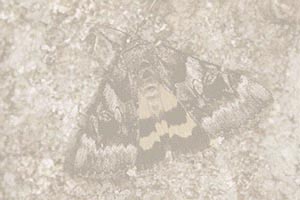 Catocala amestris
Catocala amestris
Strecker, 1874
The larvae of the 4 regularly observed Amorpha-feeding Catocala are all comparable but can be separated
from other species in North America by: their pattern consists of white, yellowish and
brownish to black stripes both dorsally and laterally (often garishly so), a stripy head capsule face with no dark band above the vertex,
no A5 saddle patch, no A5/A8 protuberances, no lateral filaments, and a venter with well-defined borders outlining the lighter mid-ventral
area which itself sports prominent darker stippling. The life history of the fifth species, the presumed Floridian endemic
slotteni,
remains unknown.
Larvae of
abbreviatella
and
whitneyi
both are typically found in prairie-like habitats where
Amorpha canescens grows, and are the closest morphologically, with abbreviatella more
brownish and with the body striping more continuous than the dot-like striping of whitneyi. Larvae of
amestris
and
nuptialis
are found in a variety of
habitats where their preferred foodplant Amorpha fruticosa grows, notably along waterways.


|


